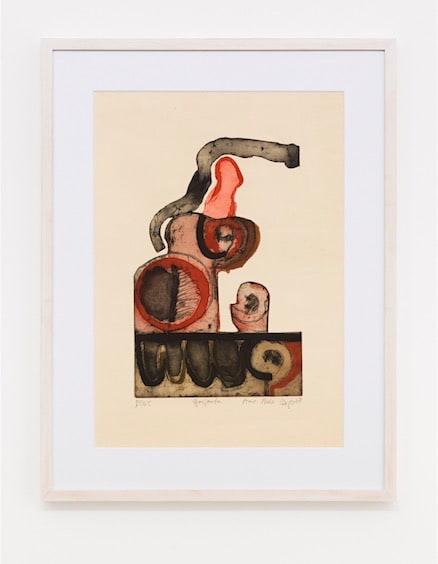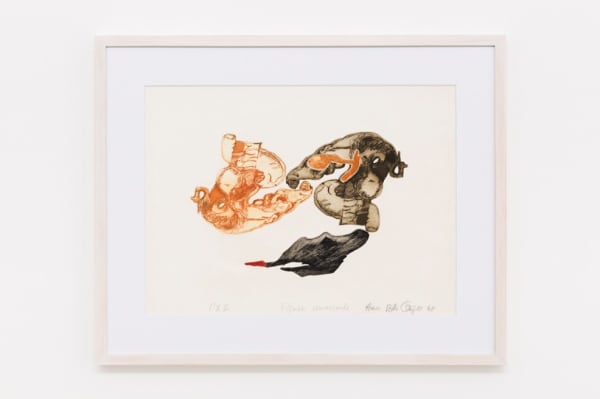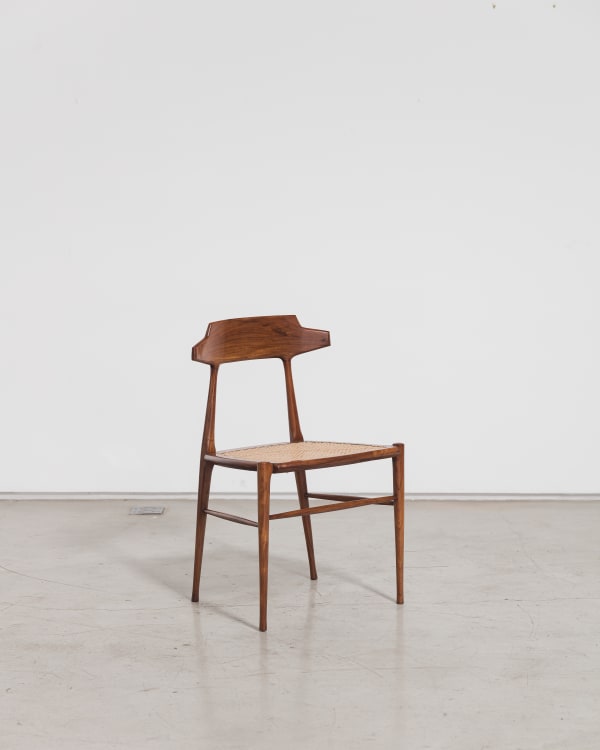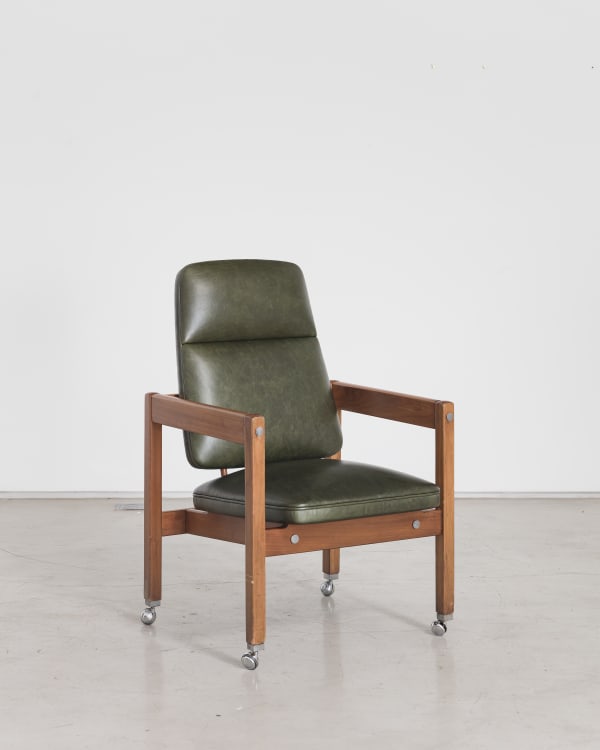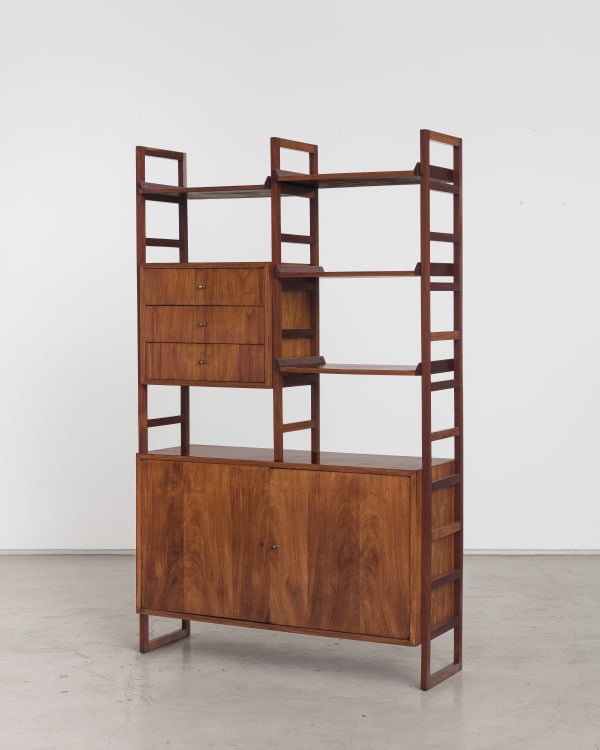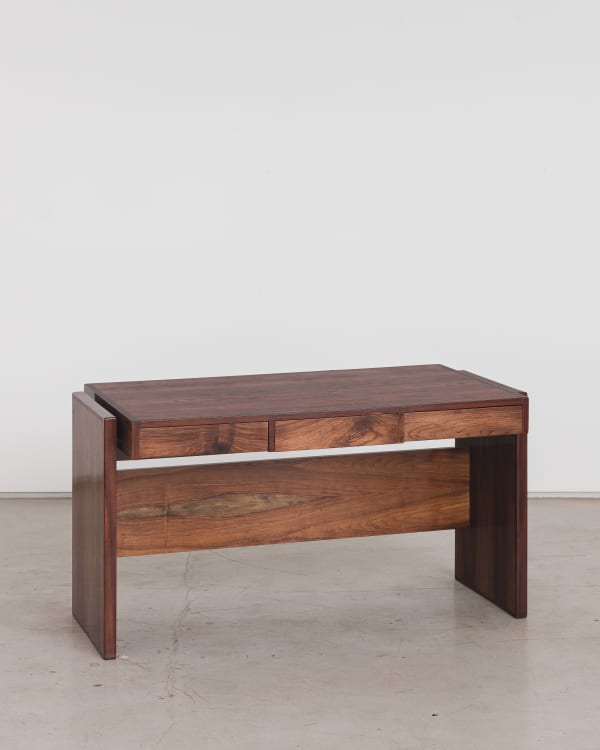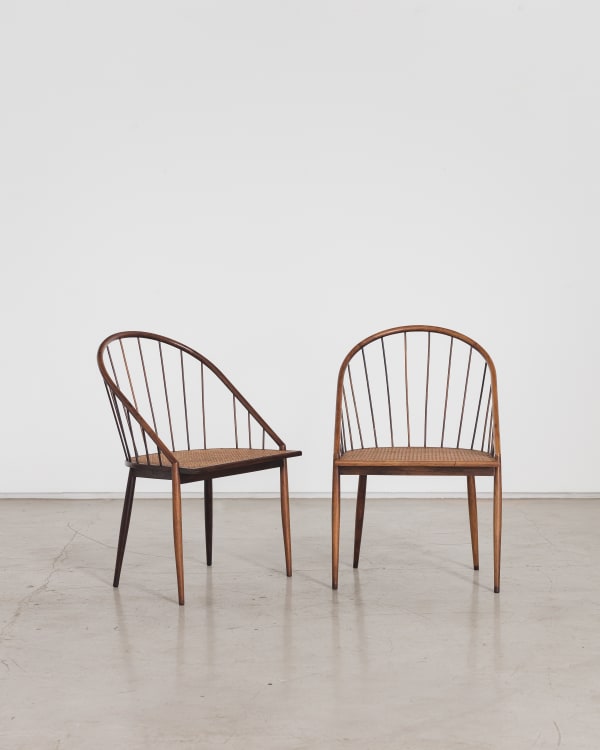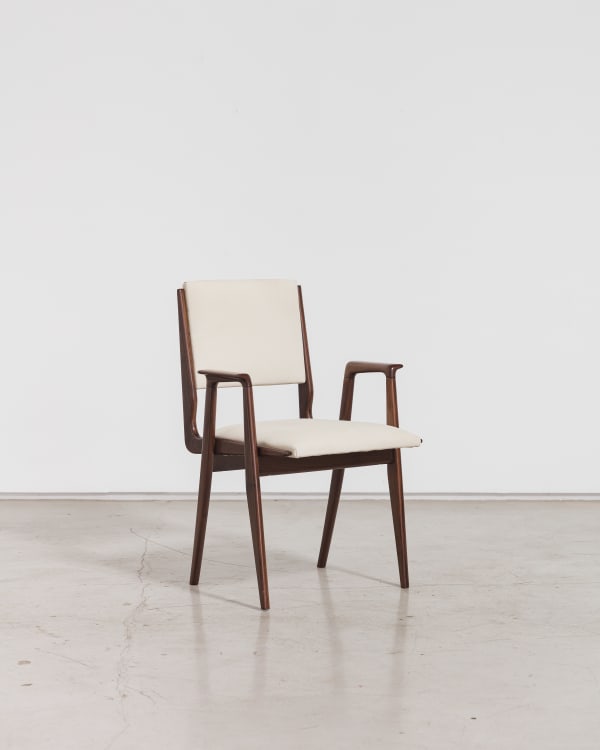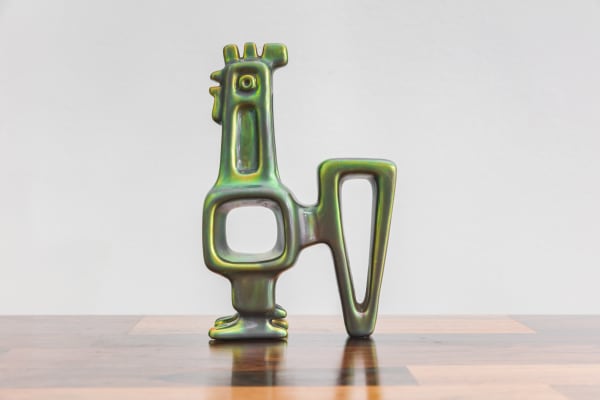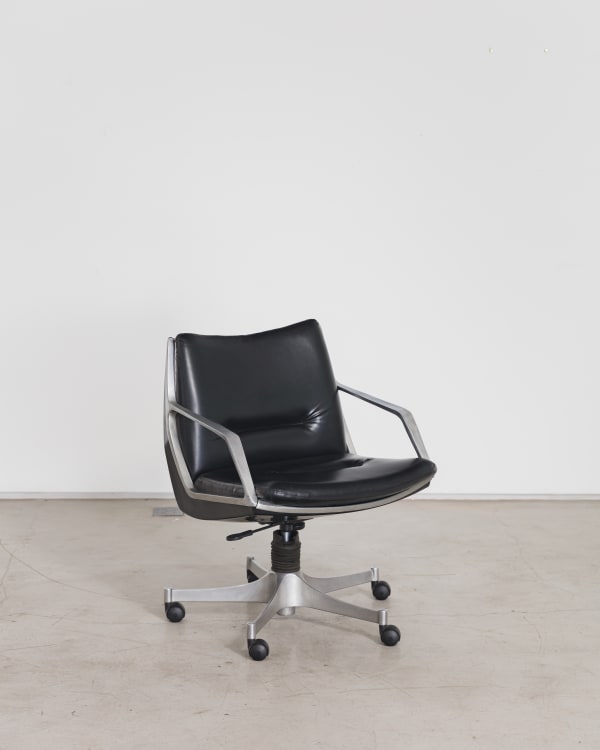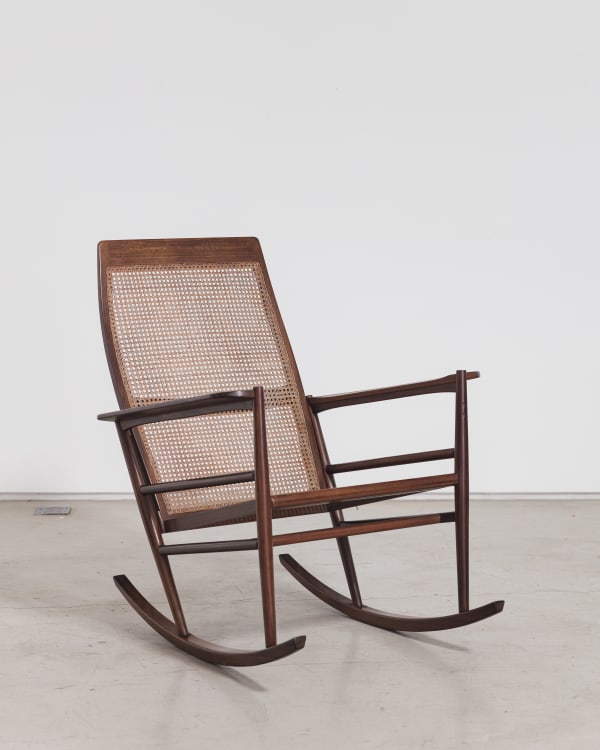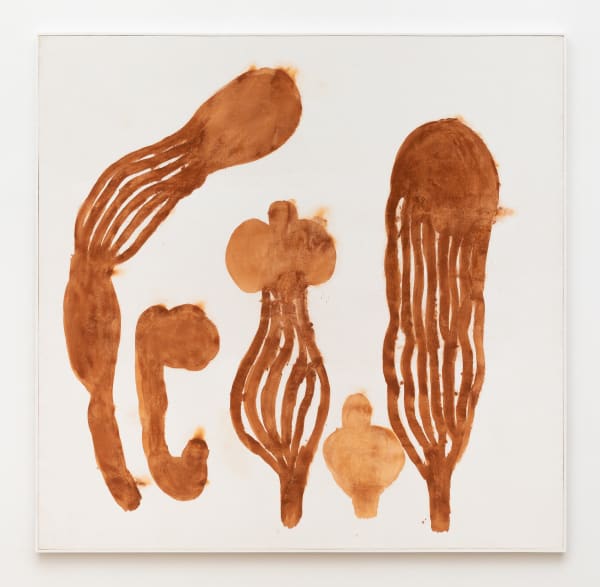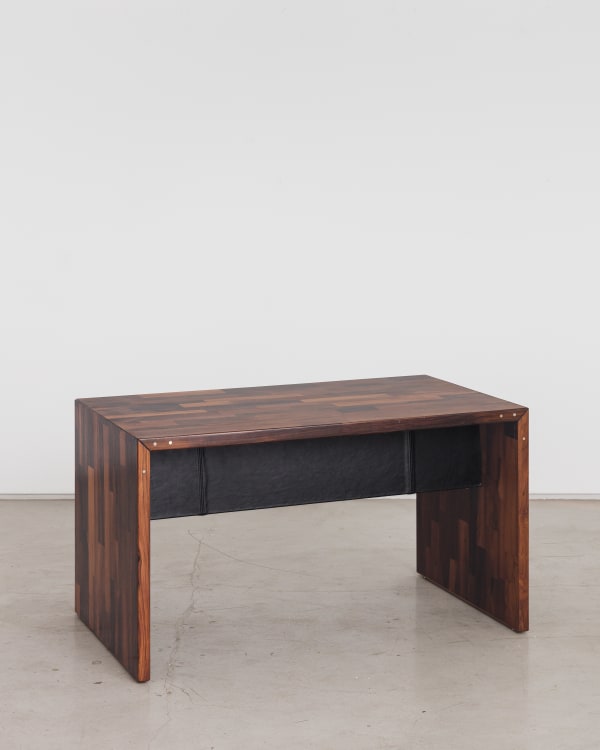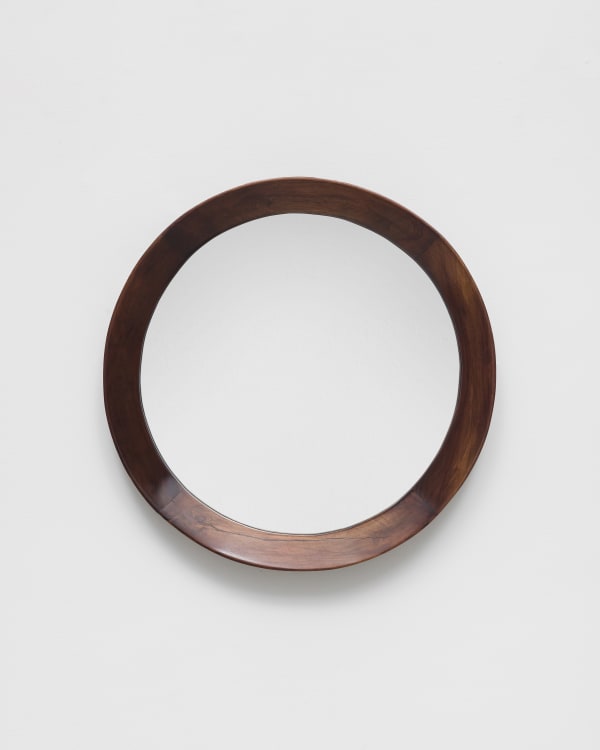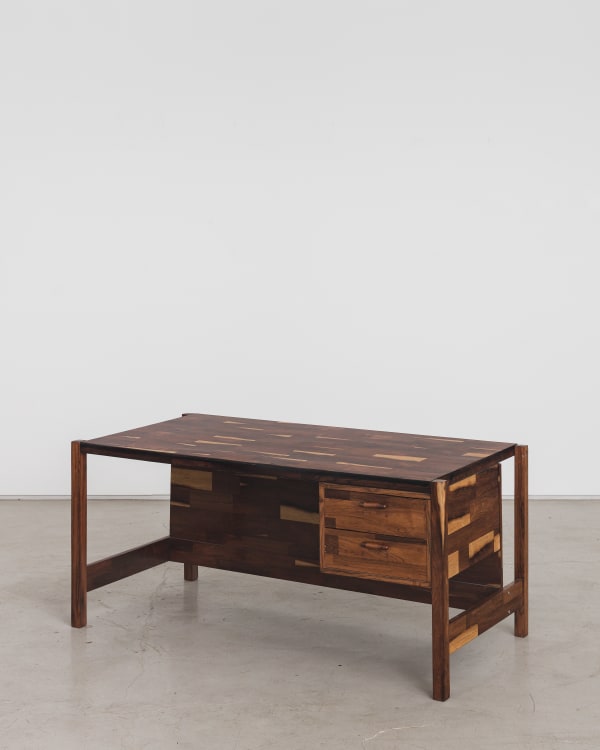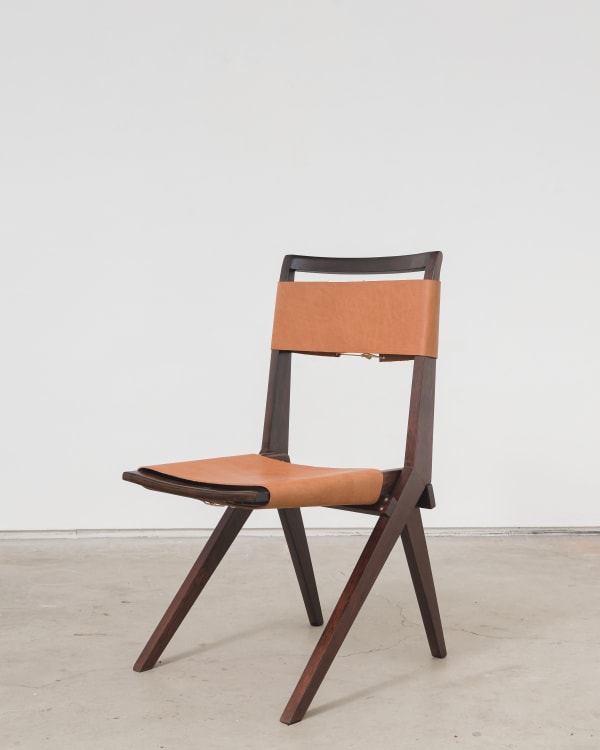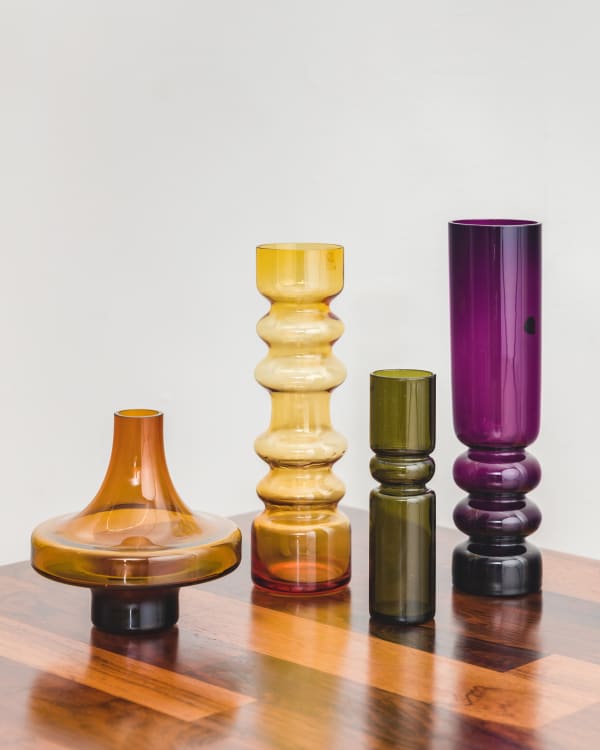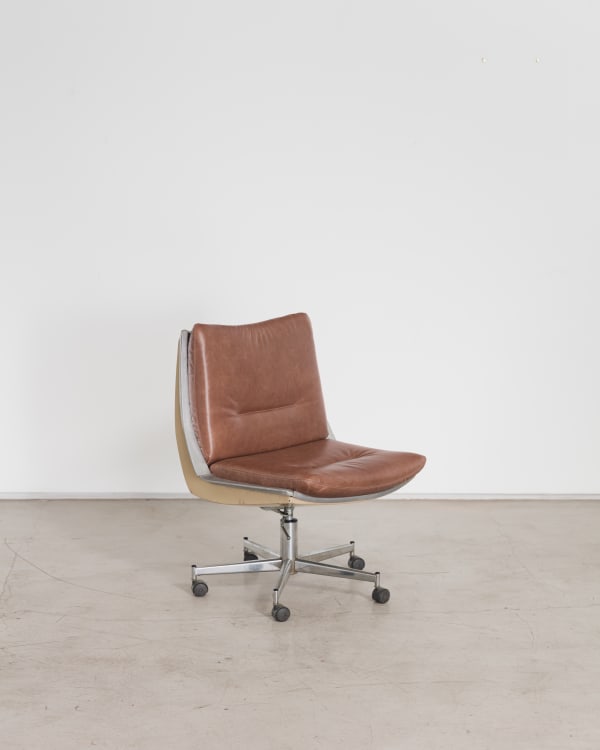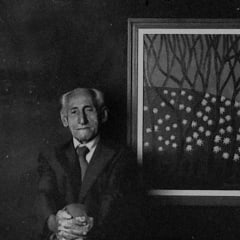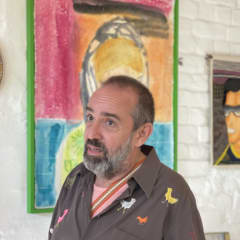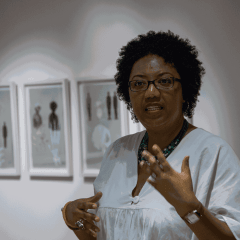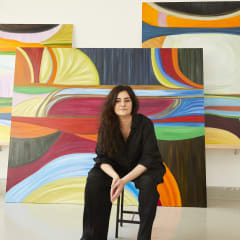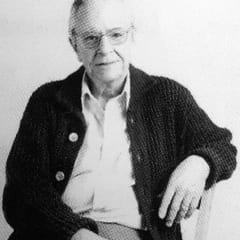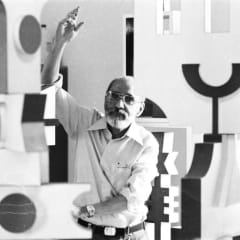Workspaces: redesigned through time Group Show
Bossa Furniture and Mendes Wood DM present Workspaces: redesigned through time, an exhibition that explores the history of office spaces from 1950 until today. By gathering Brazilian designers and artists such as Geraldo de Barros, Anna Bella Geiger, Joaquim Tenreiro, Lorenzato, Jorge Zalzuspin, Rosana Paulino, Carlo Hauner and many others, the exhibition traces formal and conceptual relationships between home, work and the individual. The stunning diversity of Brazilian art and design is a common thread in all of our workspaces.
Rupture
The Second Industrial Revolution, also known as the Technological Revolution, transformed the domestic visual landscape with the new industrial materials that it incorporated into daily life. The concept of “new” was contrasted with the craftsmanship of the previous century, which allowed the rational and the essential to coexist, exploring the close relationship between form and function, between technology and its formal expression.
Bauhaus professors taught us that, through design, art could be “for” everyone. They created an aesthetic utopia, imagining a world that would reflect the unity of all the arts. While neoclassical armchairs were conceived to transmit opulence, modern design focuses on improving user experiences. The individual was placed at the center of the design process.
The desks and chairs presented in this room are among the first ones to be designed and manufactured in Brazil in the 1950s. They represent a rupture with deco and neoclassical furniture, and are also an ode to Concretist beauty; the line, the dot, preciseness and simplicity.
Modern Offices Reinvented
The first elevators in the country were installed in 1922, but Brazilian industrialization only took off in the 1950s, when international companies first arrived in São Paulo. The first skyscrapers were commercial buildings made for companies with the intention of communicating progress and modernity — the values that these businesses aimed to transmit — through modern architecture.
Domestic Workspace
The lack of a developed industry in the country contributed to the rise of craftsmanship in Brazilian design that can be seen in Joaquim Tenreiro masterpieces and in the desks designed to public offices, produced by L'Atelier, the leading design enterprise founded by Jorge Zalzsupin in the 1960s and 1970s in Brazil.
One of the main features of Zalzsupin's works is the Rosewood patchwork, found in many of his works. According to Zalzsupin “when placed side by side the desks should combine between themselves”. The patchwork was also a keen solution to the variations of tones and veins found in Rosewood; by using small Rosewood rectangles, a large top could be manufactured without wasting wood.
In this room, Zalzsupin's patchwork desks were placed in in a way that represented the function and the complexity of the concept of the modern workspace. As we left behind typewriters, workspaces and desks need to change to follow a new way of working.
-
 Geraldo de Barros, Writing desk/ Escrivaninha, 1950
Geraldo de Barros, Writing desk/ Escrivaninha, 1950 -
 Carlo Hauner, Chair, 1950
Carlo Hauner, Chair, 1950 -
 Anna Bella Geiger, Órgão Ocidental ou Tronco, 1967
Anna Bella Geiger, Órgão Ocidental ou Tronco, 1967 -
 Anna Bella Geiger, Garganta, 1967
Anna Bella Geiger, Garganta, 1967 -
 Anna Bella Geiger, Figados conversando, da série Viscerais, 1968
Anna Bella Geiger, Figados conversando, da série Viscerais, 1968 -
 Mathieu Matégot, Magazine rack | Revisteiro, 1950
Mathieu Matégot, Magazine rack | Revisteiro, 1950 -
 Arredoluce, Lamp, 50s
Arredoluce, Lamp, 50s -
 Carlo Hauner, Writing desk, 1950
Carlo Hauner, Writing desk, 1950 -
 Ernesto Hauner, Chair, 1958
Ernesto Hauner, Chair, 1958 -
 Joaquim Tenreiro, Untitled, 1950-1960
Joaquim Tenreiro, Untitled, 1950-1960 -
 Mimi Lauter, Miniature Erect No Monument, 2018
Mimi Lauter, Miniature Erect No Monument, 2018 -
 Unknown, German vase, 1950
Unknown, German vase, 1950 -
 Anna Bella Geiger, Equações, da série De Rerum Artibus, 1978
Anna Bella Geiger, Equações, da série De Rerum Artibus, 1978 -
 Anna Bella Geiger, Equações, da série De Rerum Artibus, 1978
Anna Bella Geiger, Equações, da série De Rerum Artibus, 1978 -
 Jorge Zalszupin, Writing desk, 1960
Jorge Zalszupin, Writing desk, 1960 -
 Sergio Rodrigues, Kiko Armchair, 1960/1970
Sergio Rodrigues, Kiko Armchair, 1960/1970 -
 Forma, Bookshelf, 1960
Forma, Bookshelf, 1960 -
 Rosana Paulino, Paraíso Tropical, 2020
Rosana Paulino, Paraíso Tropical, 2020 -
 Joaquim Tenreiro, Desk, 1965
Joaquim Tenreiro, Desk, 1965 -
 Joaquim Tenreiro, Curved Chair With Stick Back, 1960
Joaquim Tenreiro, Curved Chair With Stick Back, 1960 -
 Marina Perez Simão, Untitled, 2019
Marina Perez Simão, Untitled, 2019 -
 Joaquim Tenreiro, Writing desk, 1965
Joaquim Tenreiro, Writing desk, 1965 -
 Martin Eisler, Chair with armrests, 1955
Martin Eisler, Chair with armrests, 1955 -
 Unknown, Danish Table Lamp, 1950
Unknown, Danish Table Lamp, 1950 -
 George Nelson, Wall clock | relógio de parede, 1950
George Nelson, Wall clock | relógio de parede, 1950 -
 Unknown, Hungarian cubist ceramic
Unknown, Hungarian cubist ceramic -
 Jorge Zalszupin, Guanabara, 1960
Jorge Zalszupin, Guanabara, 1960 -
 Jorge Zalszupin, Commander, 1972-1973
Jorge Zalszupin, Commander, 1972-1973 -
 Sofia Borges, O Impenetrável / The Unfathomable, 2019
Sofia Borges, O Impenetrável / The Unfathomable, 2019 -
 Jorge Zalszupin, Buffet, 1960
Jorge Zalszupin, Buffet, 1960 -
 Joaquim Tenreiro, Rocking chair, 1947
Joaquim Tenreiro, Rocking chair, 1947 -
 Solange Pessoa, Untitled | Sem título, 2012
Solange Pessoa, Untitled | Sem título, 2012 -
 Amadeo Luciano Lorenzato, Untitled, 1977
Amadeo Luciano Lorenzato, Untitled, 1977 -
 Jorge Zalszupin, Folding desk, 1974
Jorge Zalszupin, Folding desk, 1974 -
 Jorge Zalszupin, Drawer cabinets (pair), 1974
Jorge Zalszupin, Drawer cabinets (pair), 1974 -
 Celso Renato, Untitled, n.d.
Celso Renato, Untitled, n.d. -
 Fernando Marques Penteado, Zorro, o rei da luta livre, da série “Camafeu e broches de reis, santos e homens veados”, 2004
Fernando Marques Penteado, Zorro, o rei da luta livre, da série “Camafeu e broches de reis, santos e homens veados”, 2004 -
 Fernando Marques Penteado, Lampião, o rei do sertão, da série “Camafeu e broches de reis, santos e homens veados”, 2004
Fernando Marques Penteado, Lampião, o rei do sertão, da série “Camafeu e broches de reis, santos e homens veados”, 2004 -
 Rubem Valentim, Emblema Vermelho, 1970
Rubem Valentim, Emblema Vermelho, 1970 -
 Joaquim Tenreiro, Curved Chair With Stick Back, 1960
Joaquim Tenreiro, Curved Chair With Stick Back, 1960 -
 Sergio Rodrigues, Mirror, 1960s
Sergio Rodrigues, Mirror, 1960s -
 Sergio Rodrigues, Mirror, 1960s
Sergio Rodrigues, Mirror, 1960s -
 Sergio Rodrigues, Mirror, 1960s
Sergio Rodrigues, Mirror, 1960s -
 Willy Guhl, Loop chair
Willy Guhl, Loop chair -
 Jorge Zalszupin, Jorge Zalszupin | Mesa de escritório, 60’s
Jorge Zalszupin, Jorge Zalszupin | Mesa de escritório, 60’s -
 Joaquim Tenreiro, Rectangular Table , 1968
Joaquim Tenreiro, Rectangular Table , 1968 -
 Geraldo de Barros, Fotoforma, 1997
Geraldo de Barros, Fotoforma, 1997 -
 Lina Bo Bardi, Chair "Masp 7th Abril", 1947
Lina Bo Bardi, Chair "Masp 7th Abril", 1947 -
 Sergio Rodrigues, Mirror | Espelho, 60's
Sergio Rodrigues, Mirror | Espelho, 60's -
 Unknown, German vases, 1970
Unknown, German vases, 1970 -
 Unknown, Untitled, 1950
Unknown, Untitled, 1950 -
 Unknown, German Pendant Lamp, 1950
Unknown, German Pendant Lamp, 1950 -
 Joaquim Tenreiro, Dinner chair, 1960
Joaquim Tenreiro, Dinner chair, 1960 -
 Jorge Zalszupin, Commander- Bege, 1972-1973
Jorge Zalszupin, Commander- Bege, 1972-1973 -
 Geraldo de Barros, Unilabor 4015, 1960
Geraldo de Barros, Unilabor 4015, 1960 -
 Forma, Chair, 1954/1955
Forma, Chair, 1954/1955 -
 Paulo Nazareth, Concreto ou Construção, 2020
Paulo Nazareth, Concreto ou Construção, 2020




